

Copyright © Hans Högman 2017-07-25


The Allotment System - Photos of
a Soldier Croft
To the photos
Rote and Rusthåll
The Allotment System was the old system of
organizing and financing the Swedish military. It
was in use between 1682 and 1901.
In the Allotment System, the basic unit of military
organization was the rote (plural: rotar). This
translates roughly as “military district” or “military
ward.” Each individual infantry soldier or navy sailor
was assigned to a particular rote. Rusthåll was the
cavalry equivalent.
Each rote or rusthåll was associated with a farm (or
farms) in the rural countryside. Large towns and
cities did not have military districts (with the
exception of some navy units).
Rotar were established based on the size and
prosperity of the farms in a given region. Large,
wealthy farms might support more than one rote.
Less prosperous farms were grouped together into
a single rote. Rotar generally were for “ordinary”
soldiers of rank-and-file no higher than corporal.
Every rote and rusthåll was assigned a number that
denoted its position within the army or navy unit
with which it was associated. This was the “rote
number/soldier number”.
Each rote was required to provide one soldier or sailor
and an appropriate uniform for the man to wear.
An infantry regiment normally numbered 1,200
soldiers. Therefore, each province was divided into
1,200 districts (allotments) called rote. Each rote
was required to provide one soldier to the regiment
of that province. In return the farmers/freeholders
were exempted from having to serve as soldiers (as
long as they provided soldiers).
Soldier Crofts
During the era of the Swedish Allotment System
the farms of a particular rote had contractual
responsibility to provide a dwelling for its
soldier/sailor and his family. The soldier croft
(soldattorp) respectively the sailor croft
(båtsmanstorp) was a cottage on the property of
one of the farms in the rote. Use of the dwelling
was part of the soldier’s/sailor's pay. The croft also
included a small field (1-2 acres), some farm
animals and a few outbuildings.
The soldier/sailor could live at the soldier/sailor
croft only while he served in the military. When a
soldier/sailor retired (or died) he and his family had
to move out. The farmers of the rote were then
required to provide a new soldier, who would take
over the soldier croft.
If the soldier/sailor died his family had to vacate the
croft within three months.
Photos of a Soldier Croft
The photos below shows a typical soldier croft; It is
the soldier croft of rote 143 Bjärsätters, whose
soldiers served in the Life Company of the
Södermanland Regiment.
The dwelling is an X-joint log house with a tile
roofing. The croft has a so-called suspended
foundation with an underground crawl space.
This croft was originally located in Björkvik parish,
Södermanland. In the 1930s the croft was re-
erected at the Södermanland Regiment Garrison in
Strängnäs. This soldier croft was originally built in
the 18th century.
From 2010 the soldier croft is located at Arsenalen, a
Military Tank Museum in Strängnäs.
The last soldier of the croft was soldier 143 Carl
Gustaf Dahl (1834 - 1932). He was enrolled as a
soldier with the regiment in 1863 and served until
1894.
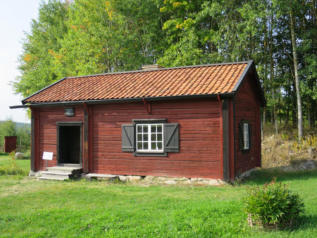
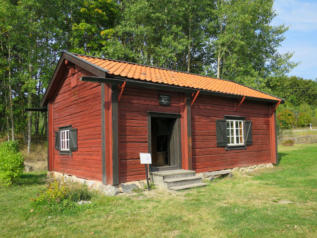
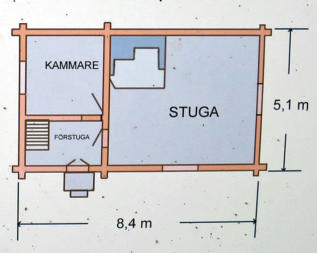
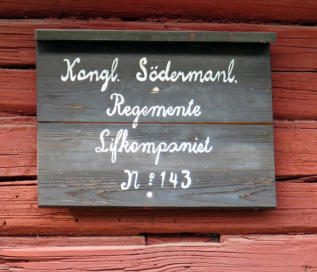
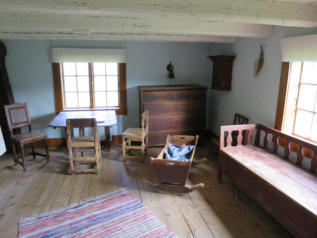
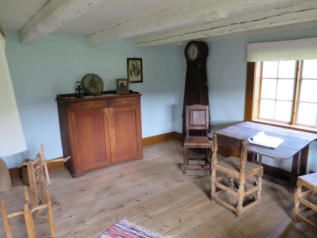
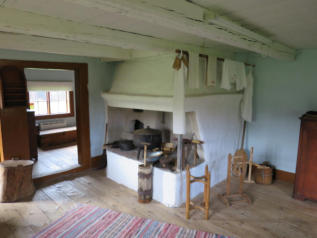
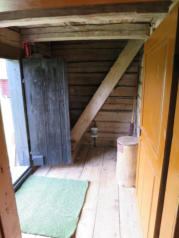
The Allotment System -
Sweden (6)

Arsenalen. Photo, Hans Högman, 2016.


























